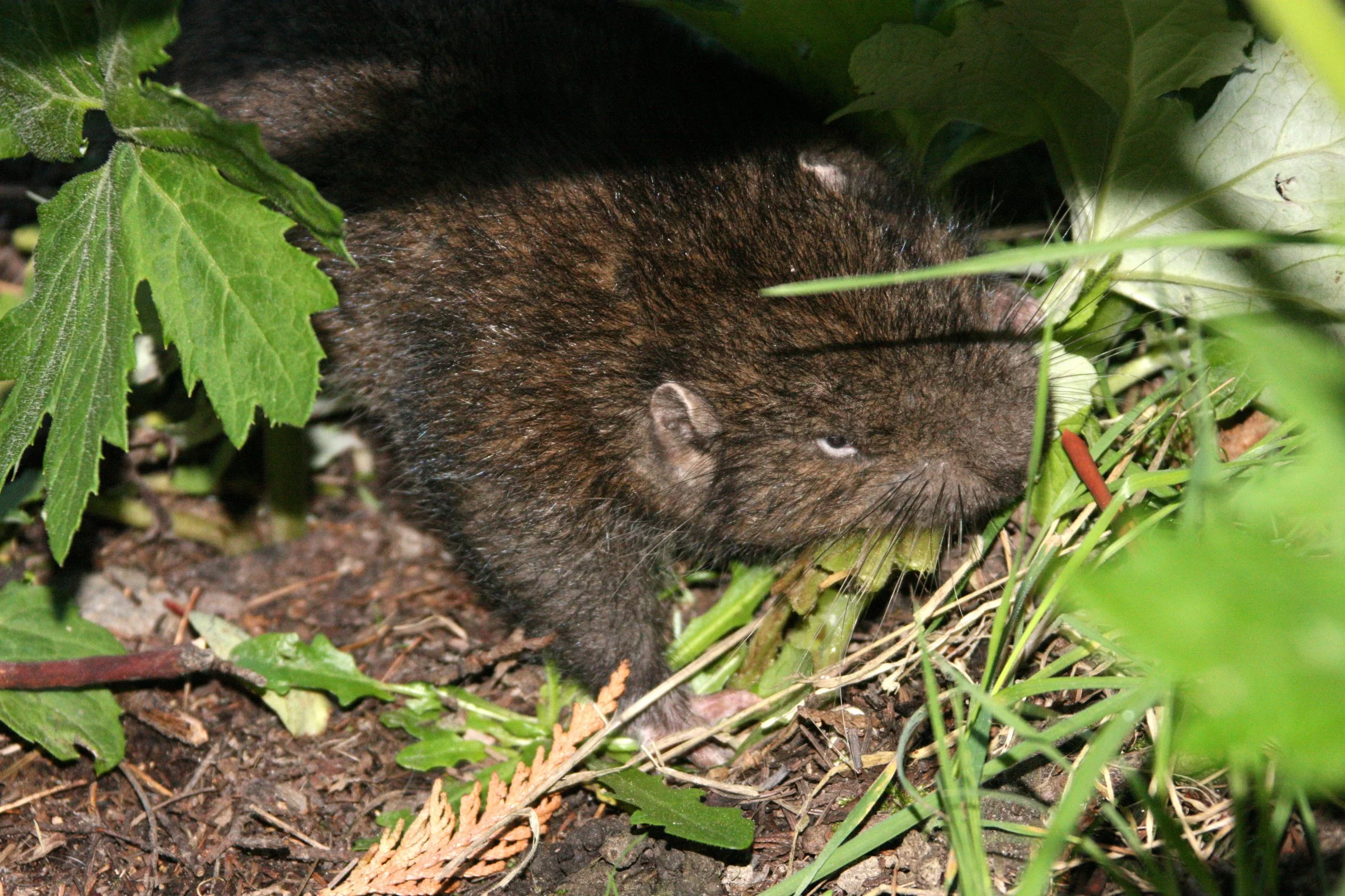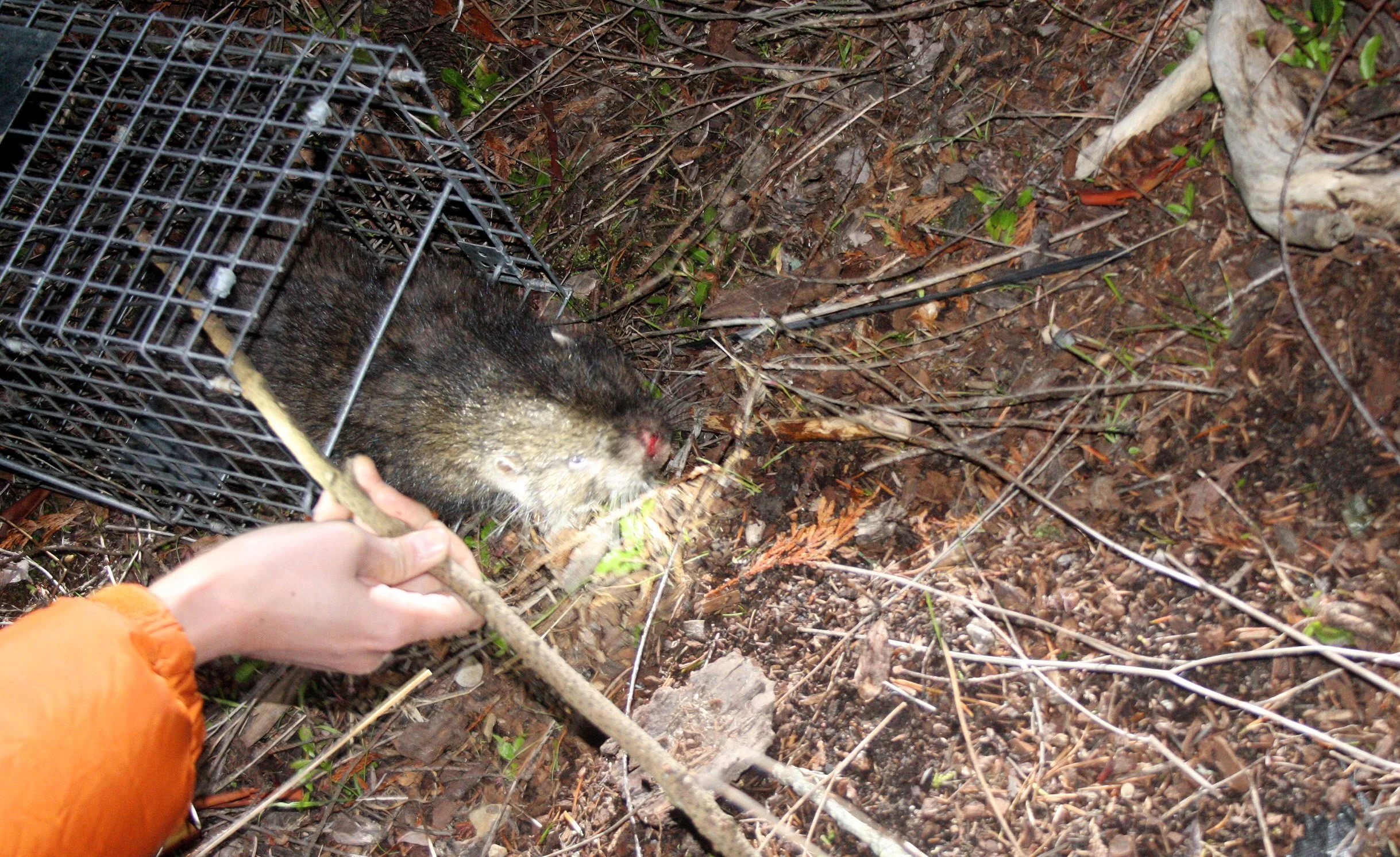The Mountain Beaver (Aplodontia rufa) is a North American rodent. It is the only living member of its genus, Aplodontia, and family, Aplodontiidae. It should not be confused with true North American and Eurasian beavers, to which it is not closely related, being more closely related to squirrels. There are 7 subspecies of mountain beavers, 6 of which are found in California and 3 of which are endemic to the state.
Mountain beavers are found in the Cascade Mountains of British Columbia and southward including the rest of the Cascade Range in the United States, the Olympic Mountains and Coast Ranges of Washington and Oregon, plus the Klamath Mountains, and the Sierra Nevada, Point Arena and Pt. Reyes of California and extreme western Nevada. They range from sea level to the tree line. They can be found in both deciduous and coniferous forests, but throughout most of the range they appear to prefer the former. These animals are physiologically limited to moist microenvironments, with most subspecies occurring only in regions with minimal snowfall and cool winters. They do not appear to be able to conserve body heat or warmth as efficiently as other rodents, nor do they hibernate.
Mountain beavers are capable of climbing trees, but rarely travel far from burrows. Their thumbs are slightly opposable and the animals will sit on their hindquarters and manipulate food with their forelimbs and incisors. Mountain beavers are asocial and do not live in shared burrows. Burrows usually consist of a network of tunnels built in deep soil. The entrances to these burrows often contain clumps of wilted vegetation which the animal likely uses as a kind of food cache as well as a source of nesting material. Mountain beavers seldom travel more than a few meters from their burrow entrances, taking advantage of the protection such burrows offer from predators such as cougars and owls (though skunks and weasels that also occupy mountain beaver burrows and tunnels may take nestlings as food). They appear to build hay mounds at some burrow entrances, but whether this behavior is related to water regulation, curing food, or gathering nest materials is debated. Mountain beavers are partially nocturnal, spending more time active at night than the day but still active during both periods. They actively feed in periods of up to 2 hours and 45 minutes throughout the day with 6 or 7 periods of feeding per day. In total they forage for up to 9 hours per day.













































